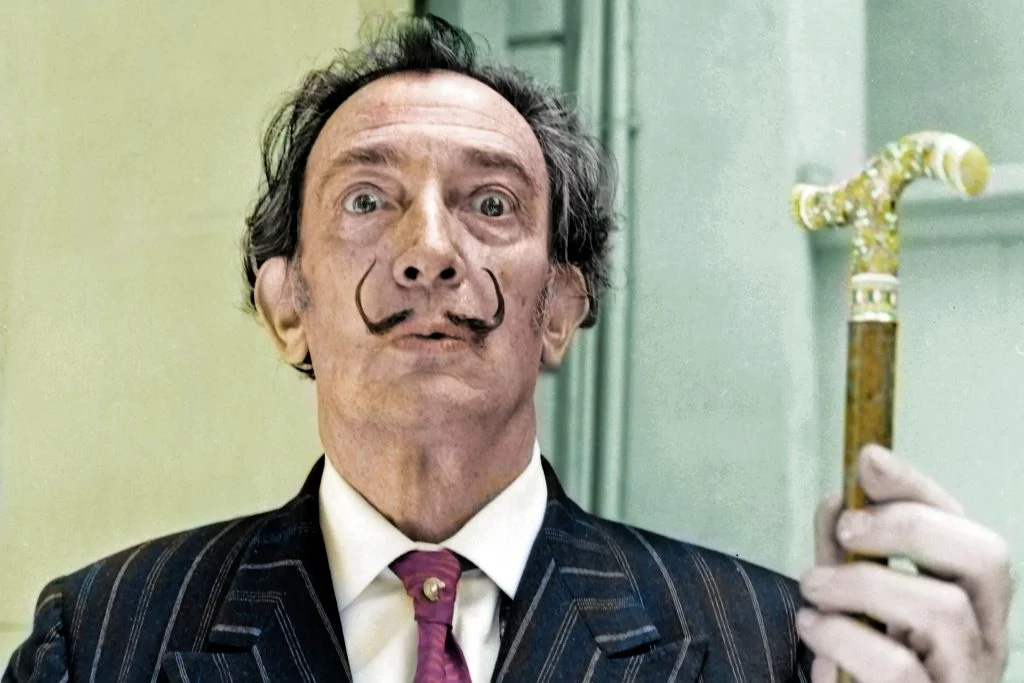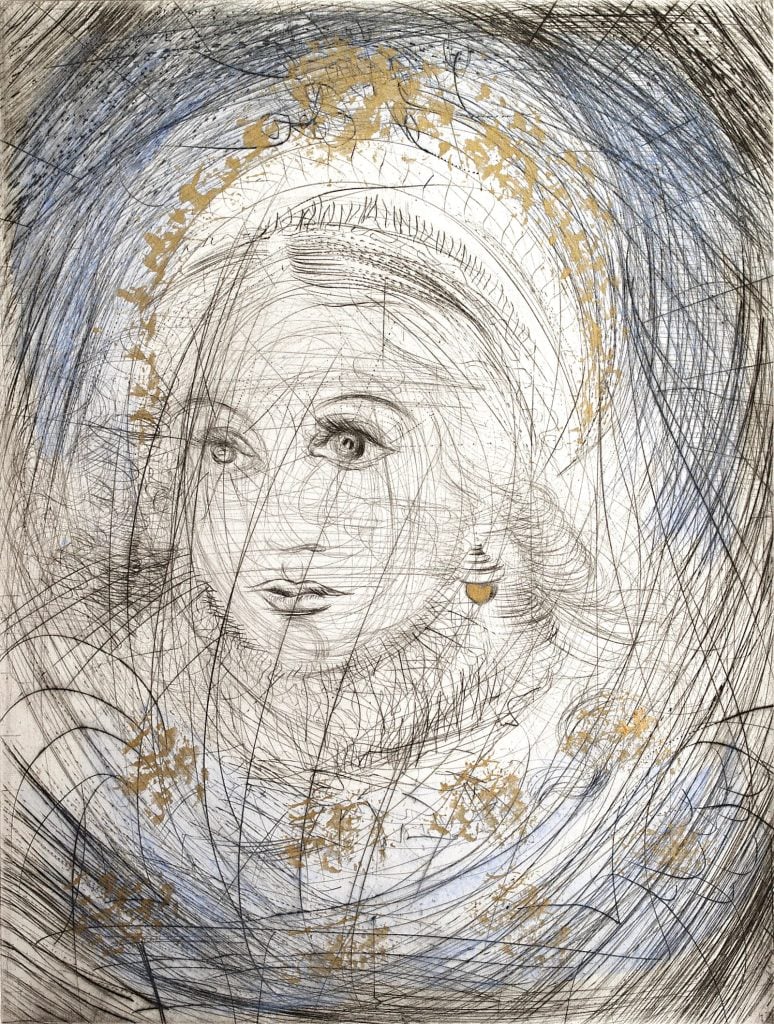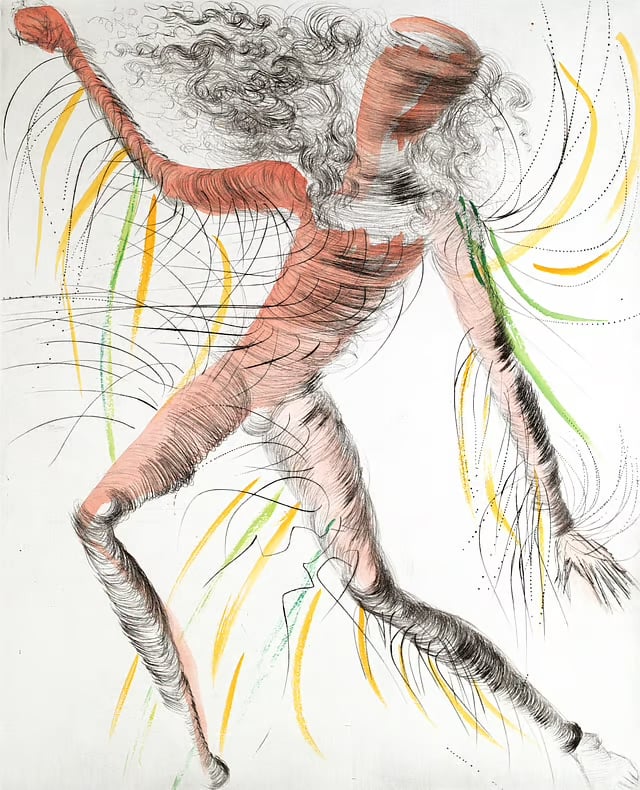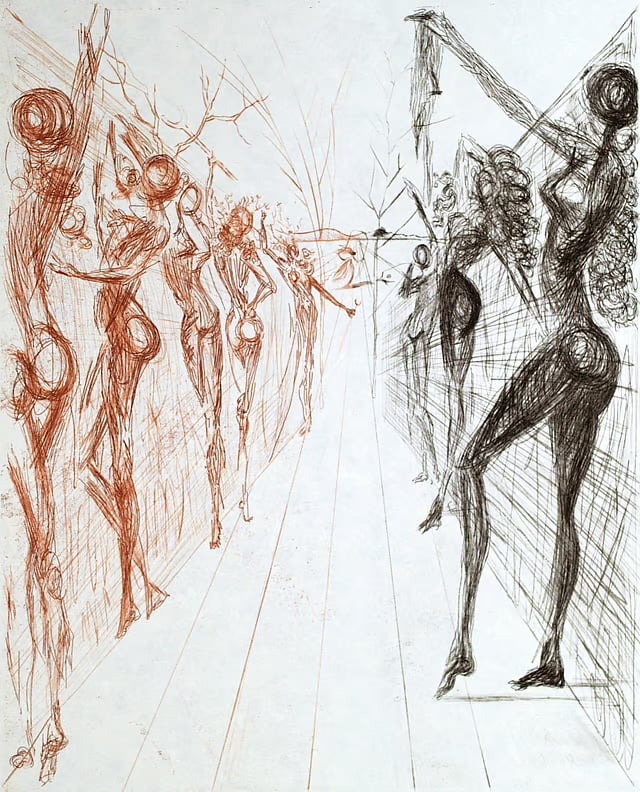
Artnet_ The first major exhibition of work by Salvador Dalí (1904–1989) has touched down in New Delhi, India, featuring over 200 pieces by the Surrealist master. It’s drawn from the collection of the artist’s long-time collaborator, collector, and print publisher Pierre Argillet (1910–2001), and curated by his daughter, Christine Argillet.
A dedicated supporter of the Surrealists, as well as Dadaists and Futurists, Pierre Argillet began working with Dalí in the 1930s, before his daughter was even born. The younger Argillet grew up in the orbit of the artist, who nicknamed her the “The Little Infante,” she told the Independent. Dalí was “a very humorous and elegant man, often having an eccentric and joyful way of being.”
“Salvador Dalí: The Argillet Collection,” which opened earlier this month at the Visual Arts Gallery at the India Habitat Centre, and is now on view at Massarat Gallery, thanks to the Bruno Art Group, is free to visit. The works on view range from etchings to watercolors to tapestries.
The artist never visited India himself, but the exhibition does highlight his connections to the country.

Salvador Dalí, Marguerite, “Faust” (1969). Courtesy of the Bruno Art Group.
“Dalí was fascinated by India, especially the West’s fascination with Indian mysticism in the 1960s and 1970s,” Argillet told the BBC.
In 1967, Air India hired Dalí to design porcelain ashtrays for first class customers. The edition of an estimated 500 featured an ingenious design in which the legs of the tray appeared to be both elephants and swans, but were actually the same form inverted.

Salvador Dalí, The Cosmonaut, “The Hippies” (1969–70). Courtesy of the Bruno Art Group.
In return, he asked for—and received—an elephant as payment, writing that “I wish to keep him in my olive grove and watch the patterns of shadows the moonlight makes through the twigs on his back.” (Instead, the elephant lived at a zoo in Barcelona until its death in 2018.)
And when Argillet and her father visited India in the 1970’s, the photos he took became the basis for “Hippies,” a series of 11 prints by Dalí.

Salvador Dalí, The Corridor of Katmandu, “The Hippies” (1969). Courtesy of the Bruno Art Group.
“When my father and I returned from a long trip to India,” Argillet told Vogue. “Dalí immediately suggested the idea of comparing India’s attraction to the West with the pull young Westerners from the hippie movement felt towards India.”
There are examples from many of the etching series that Dalí produced with Argillet, including “Mythologie” (1963–65), inspired by Greek mythology such as the stories of Icarus, Theseus and the Minotaur, and Leda and the Swan; and “Faust” (1969), based on the Johann Wolfgang von Goethe play.
There are also the 50 prints Dalí designed for his 1934 edition of Comte de Lautréamont’s Les Chants de Maldoror, a bizarre and violent 19th-century French poetic novel that became something of a group obsession for the Surrealist movement.
“Salvador Dalí: The Argillet Collection” is on view at Massarat Gallery New Delhi, Savitri Cinema Complex, GK-II, New Delhi, India, February 15–March 16, 2024.
